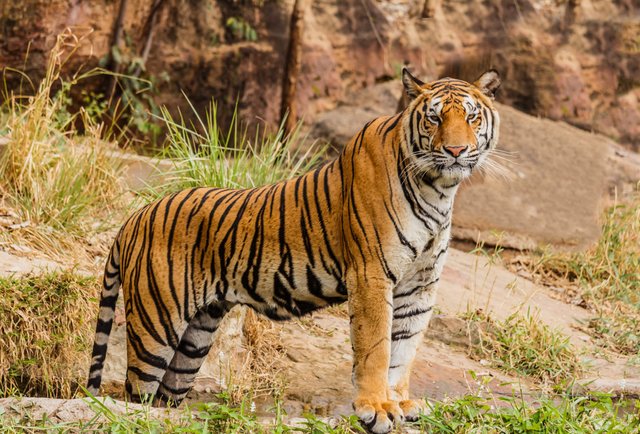
In the dense jungles of Asia, where sunlight filters through the canopy and the air is thick with humidity, there roams a creature that embodies power, grace, and mystique like no other: the tiger. Revered as the king of the jungle, the tiger captivates our imagination with its striking beauty and enigmatic presence. In this blog, let's delve into the world of these magnificent big cats and explore why they are not only icons of the wild but also vital guardians of their ecosystems.
A Glimpse into the Tiger's World
Tigers, with their distinctive orange coats adorned with bold black stripes, are instantly recognizable and universally admired. They are the largest of all wild cats, with males weighing up to 600 pounds and measuring over 10 feet in length, from nose to tail. Despite their imposing size, tigers are incredibly agile and stealthy hunters, capable of silently stalking their prey through the dense undergrowth.
These solitary hunters primarily prey on large mammals such as deer, wild boar, and even young elephants and rhinoceroses. With their powerful jaws and razor-sharp claws, they dispatch their prey swiftly, ensuring a quick and efficient kill. However, despite their fearsome reputation as apex predators, tigers are also surprisingly elusive, often preferring to avoid human contact whenever possible.
The Tiger's Role in the Ecosystem
Beyond their undeniable beauty and strength, tigers play a crucial role in maintaining the delicate balance of their ecosystems. As top predators, they help regulate the populations of prey species, preventing overgrazing and habitat degradation. In doing so, they indirectly support the health and diversity of plant life, which in turn sustains countless other species within their habitats.
Moreover, tigers are considered umbrella species, meaning that by conserving their populations and habitats, we also protect a wide range of other species that share their ecosystems. By safeguarding tiger habitats, we help preserve entire ecosystems, from the lush forests of Southeast Asia to the grasslands and wetlands of the Indian subcontinent.
Challenges Facing Tigers
Despite their cultural significance and ecological importance, tigers face numerous threats to their survival. Habitat loss and fragmentation due to deforestation, human encroachment, and infrastructure development have greatly reduced their historical range. Additionally, poaching for their skins, bones, and other body parts continues to pose a significant threat, driven by illegal wildlife trade and demand for traditional medicine.
Conservation efforts aimed at protecting tigers and their habitats have made significant strides in recent years, with increased law enforcement, habitat restoration, and community-based conservation initiatives. However, much more work remains to be done to ensure the long-term survival of these iconic big cats.
Conclusion: A Call to Action
In a world where the wilderness is rapidly disappearing and biodiversity is under threat, the fate of the tiger serves as a poignant reminder of our interconnectedness with the natural world. As stewards of this planet, it is our responsibility to protect and preserve these majestic creatures and the ecosystems they inhabit.
By supporting conservation organizations, advocating for stronger wildlife protection laws, and making sustainable choices in our daily lives, we can all contribute to the conservation of tigers and other endangered species. Together, let us work towards a future where tigers continue to roam the wild, their presence a symbol of strength, resilience, and the untamed beauty of nature.
